
Parameter Estimation in FSI models
and its application to cardiac contraction
Joint work Cristóbal Bertoglio
Reidmen Aróstica - April 16, 2024, University of Groningen - Brief Summary

Table of Content
- Motivation, Dynamical System and Noisy Data
- Parameter Estimation - Algorithm
- Parameter estimation using solid, fluid or joint measurements
- Summary

Motivation and Dynamical System
Brief Explanation
Motivation
Domain evolution in time Pfaller et al. (2019)
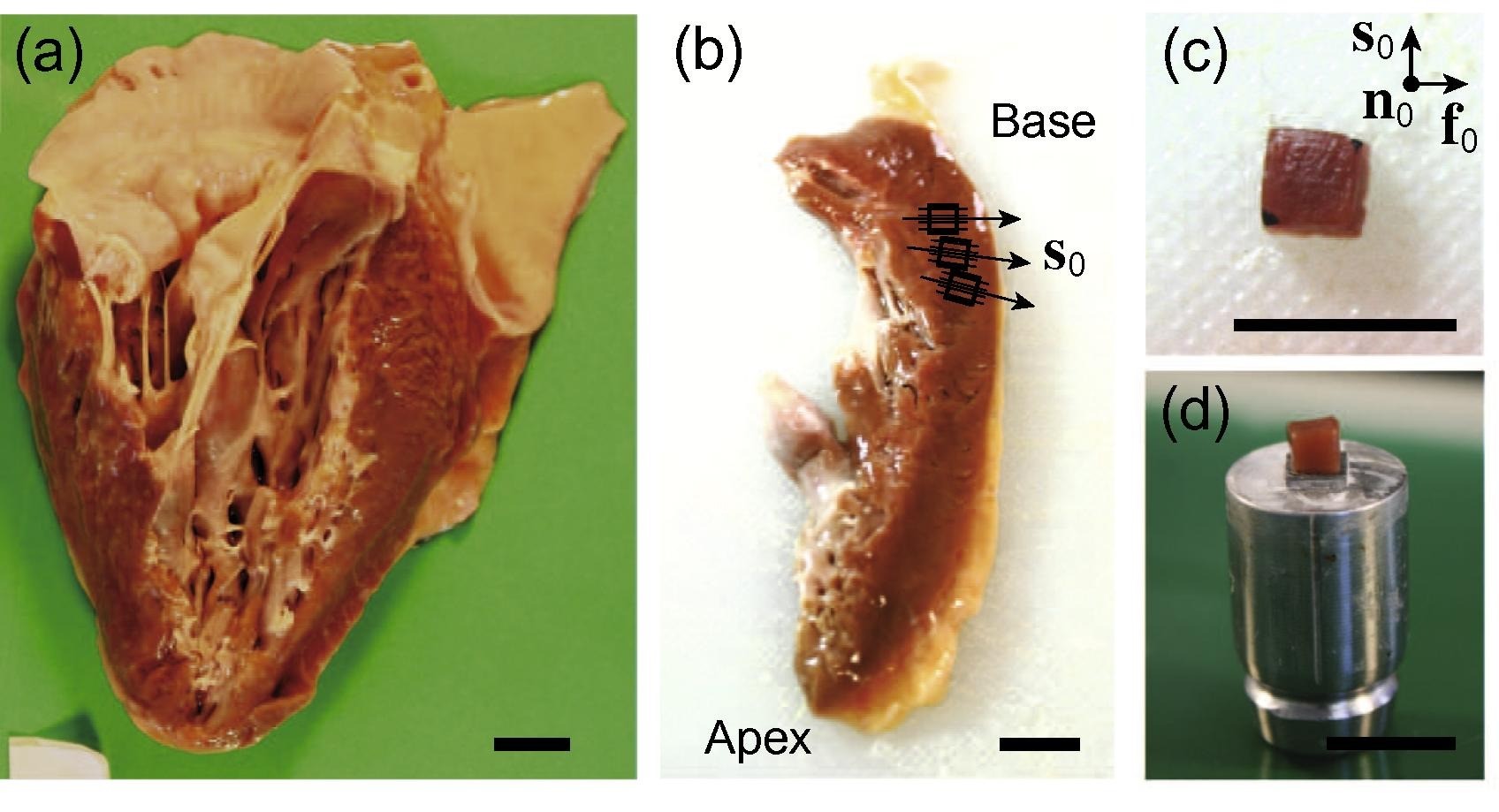
Heart sample G. Sommer et al. (2015)
Fluid Dynamics $\mathcal{O}(\Delta T^{1/2})$
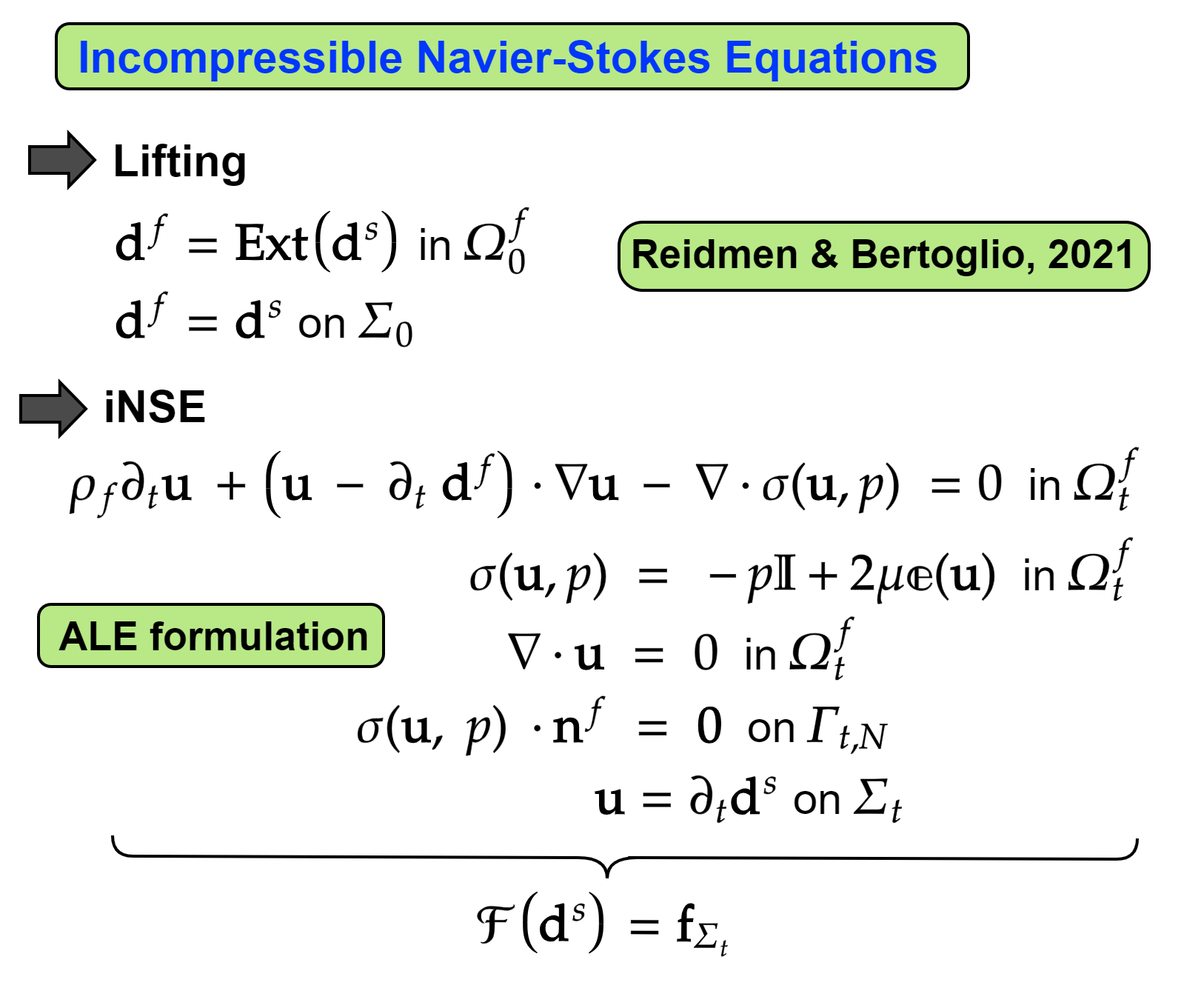
Solid Model and Parameter of interest
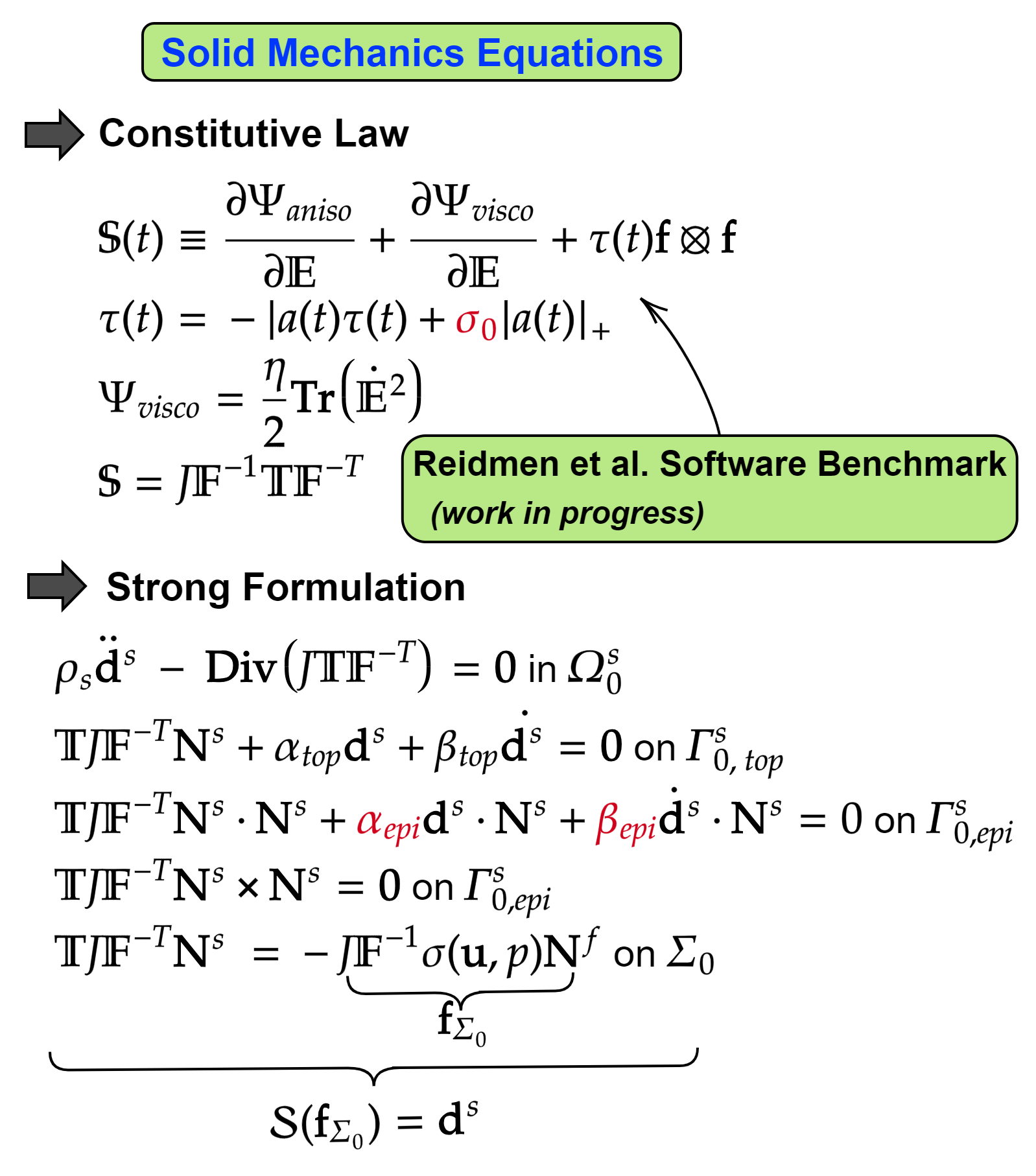
FSI Algorithm
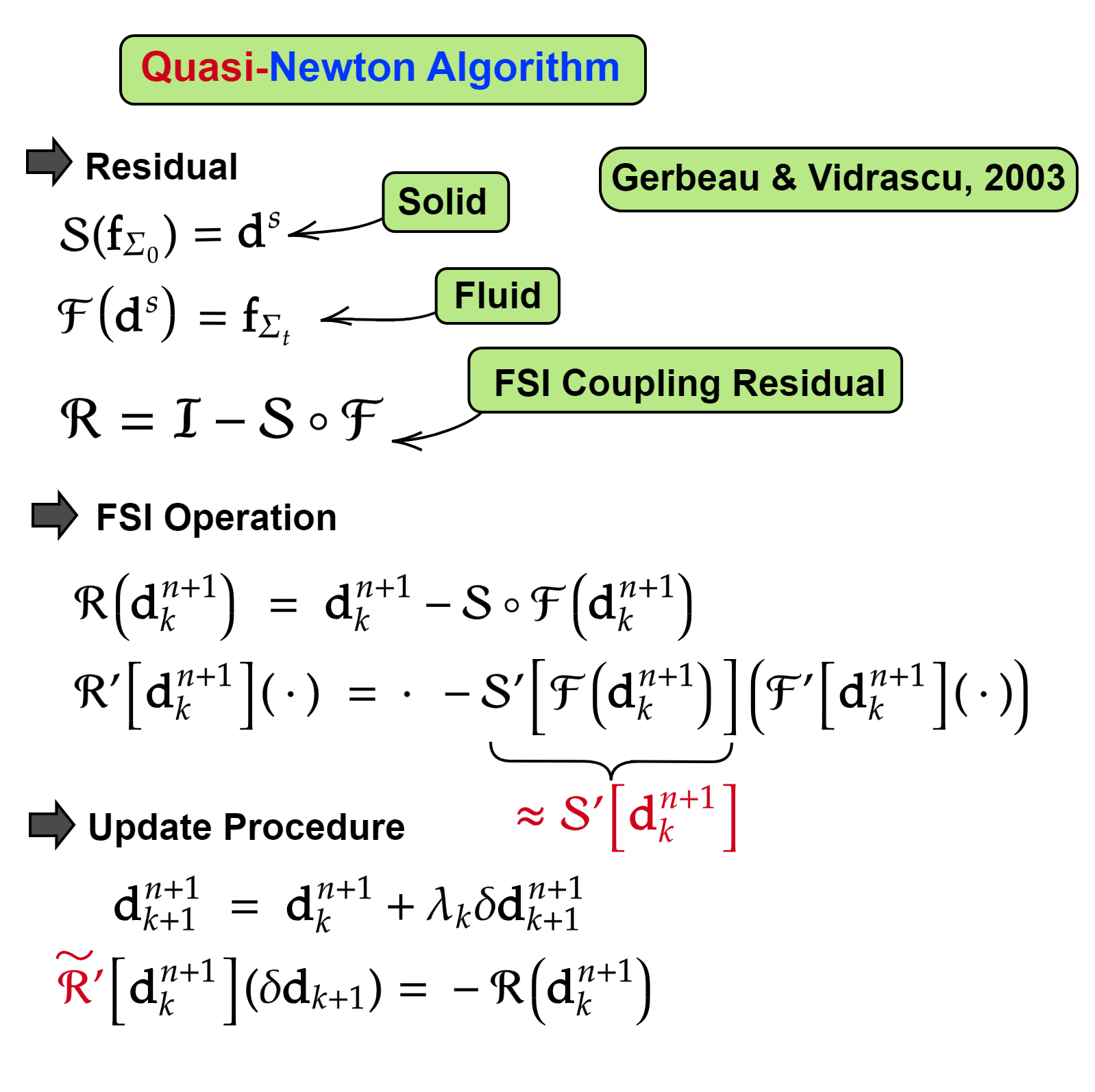
Noise for fluid and solid
Noise $\approx 1.4e^{-3}[m]$ of solid displacement and $\approx 0.22 [m/s]$ of velocity.

Parameter Estimation
How we manage it?💡
General Idea💡
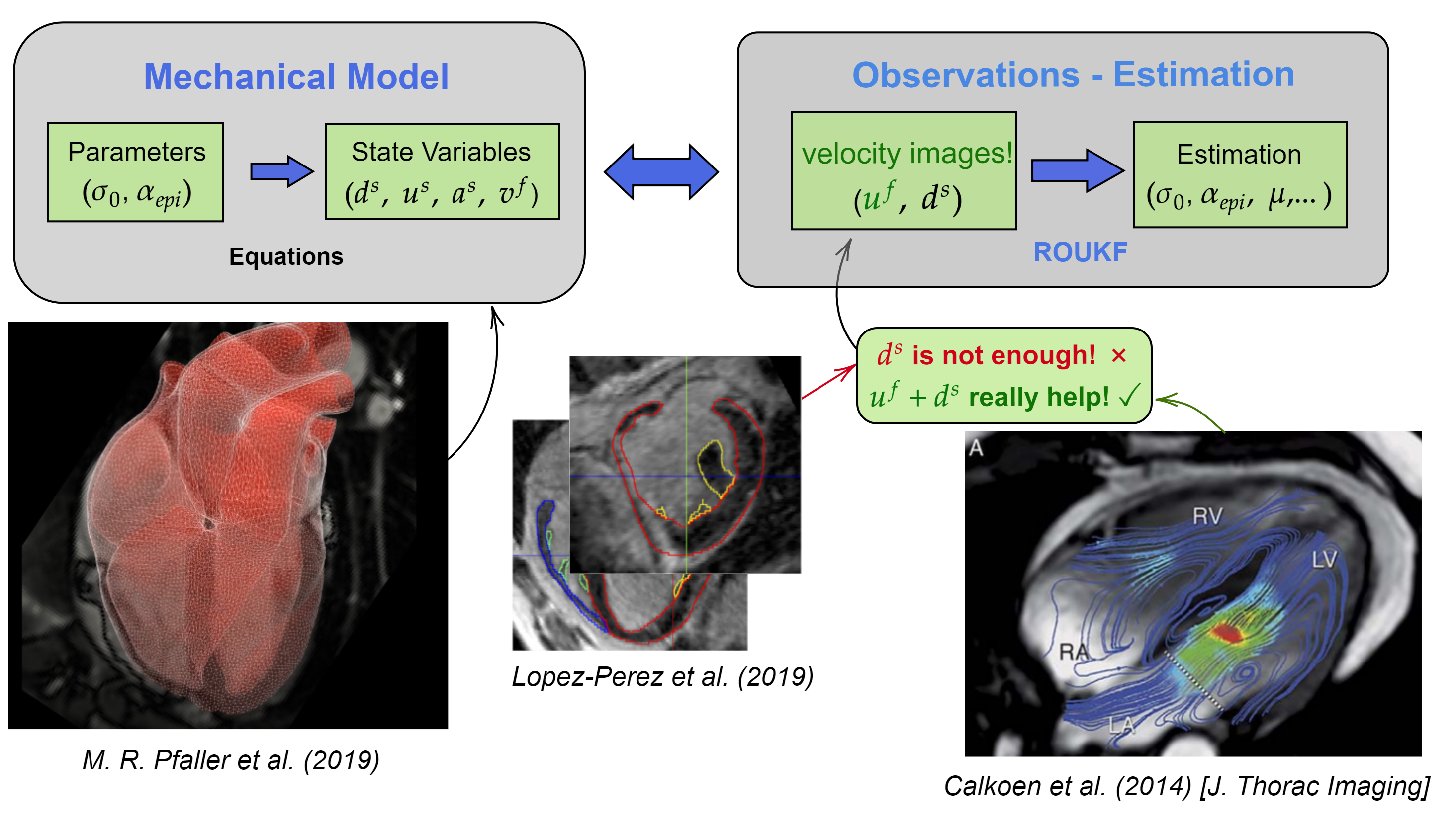
ROUKF
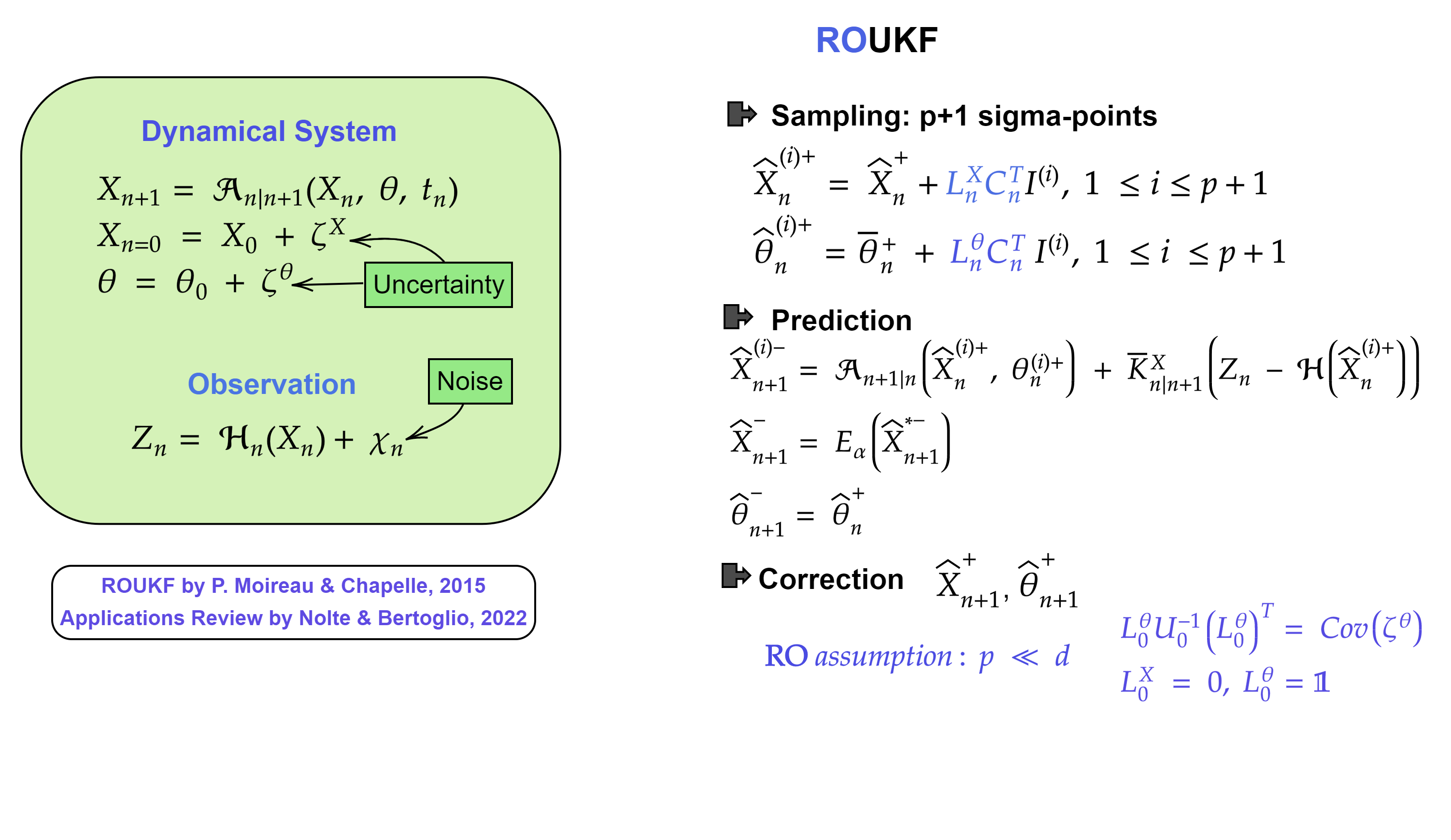

Estimation of parameters
Using an acquisition time of $20 [ms], \sigma = 0.5$
Estimation of epicardial stiffness $\alpha_{epi}$
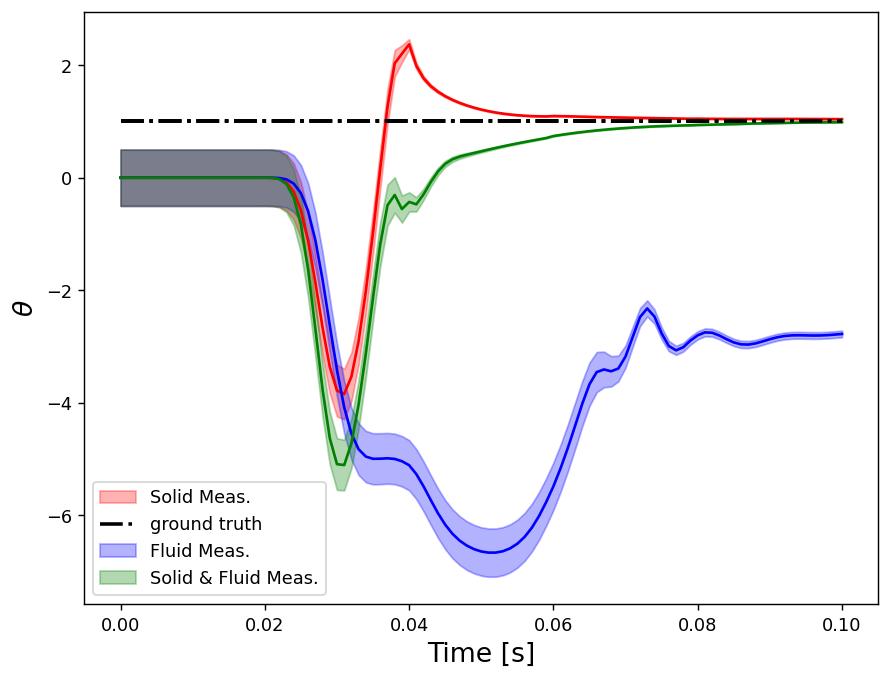
Estimation of epicardial damping $\beta_{epi}$
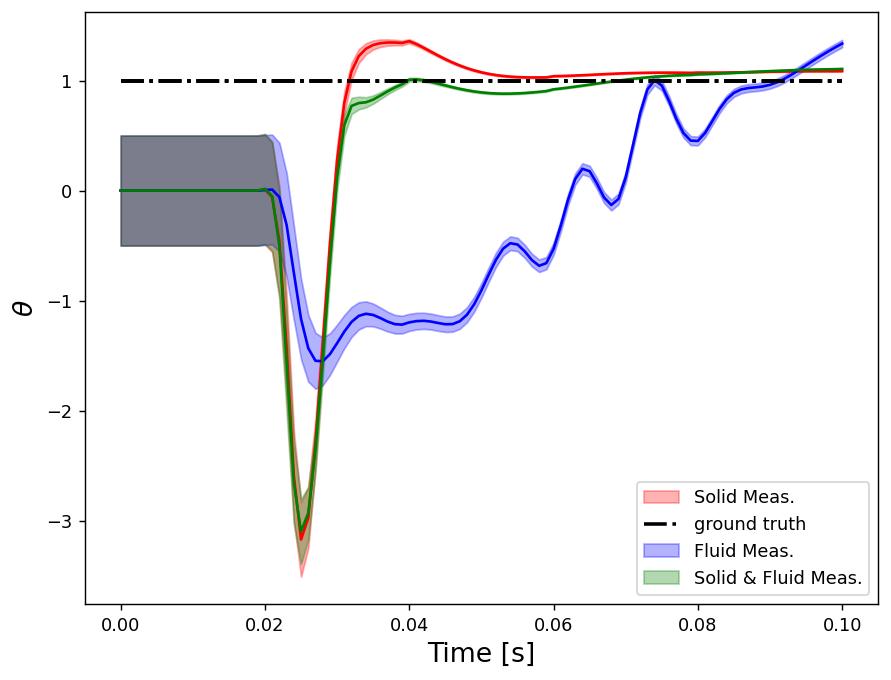
Estimation of $\alpha_{epi}$ and $\beta_{epi}$
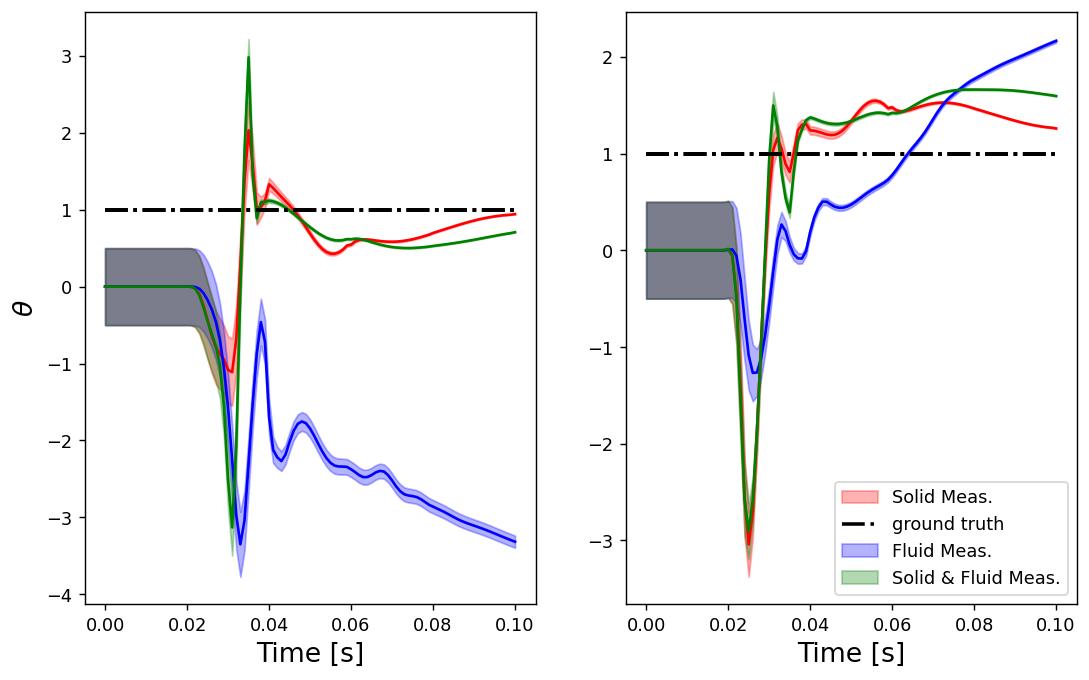
Estimation of contractility $\sigma_0$
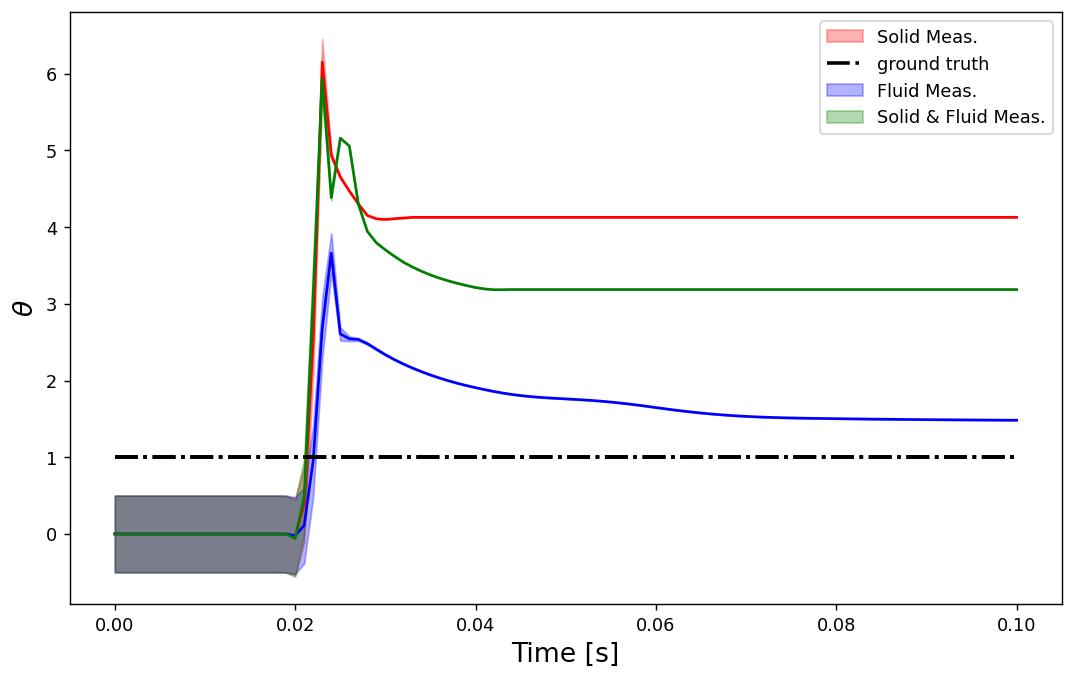
Estimation of epicardial stiffness $\alpha_{epi}$ at 10[ms]
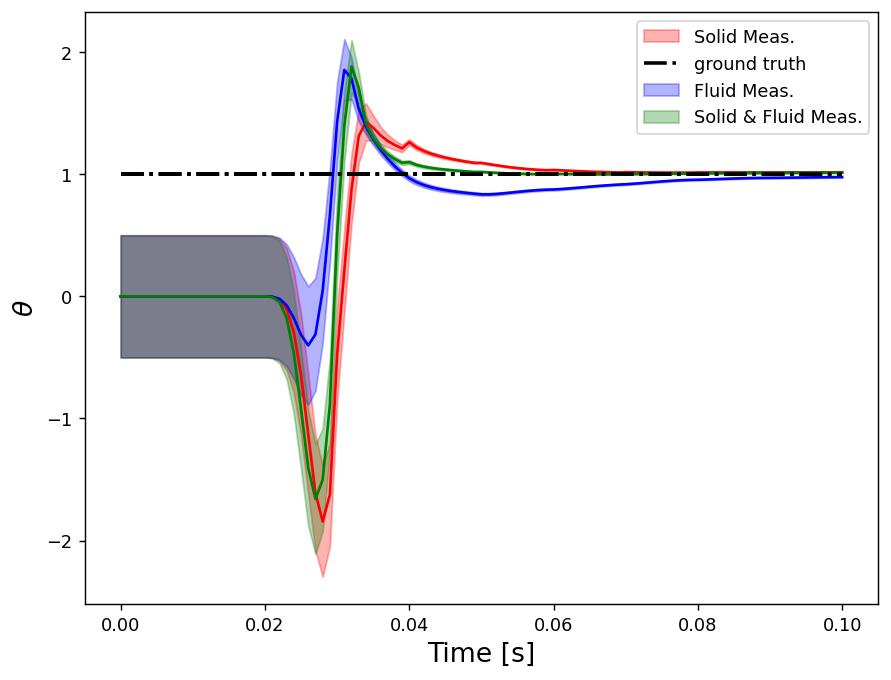
Estimation of epicardial damping $\beta_{epi}$ at 10[ms]
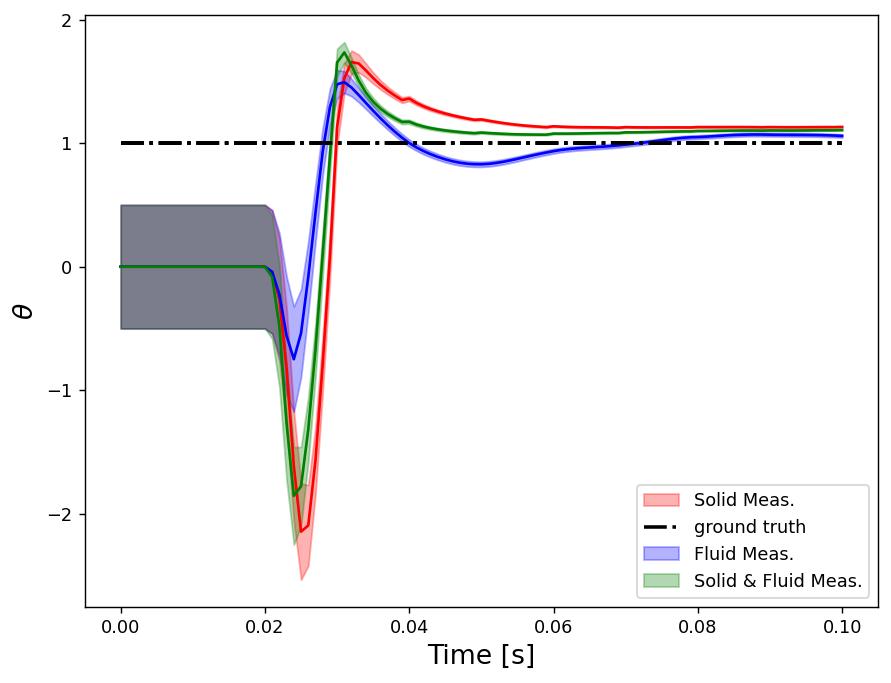
Estimation of $\sigma_0$ for $\sigma_0 = 0.25$ at 10[ms]


V. Summary
Summary
- ✓ To the best of the author's knowledge, 'velocity images' for parameter estimation has not been assess before.
- ✓ Our preliminary results show that they can improve the prediction!
- ✓ Work in progress: FSI (two-ways) convergence rate and solid surface images.
Contact Information
- c.a.bertoglio@rug.nl
- r.a.arostica.barrera@rug.nl
Thank you!

https://bit.ly/30NtCtD